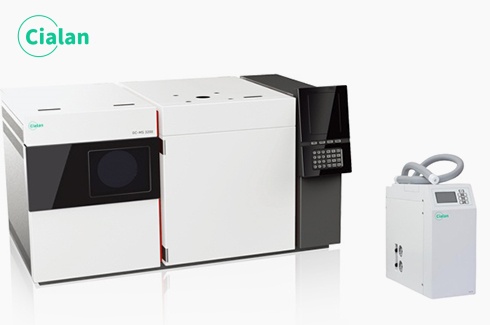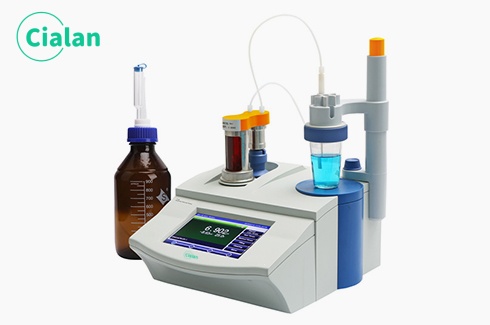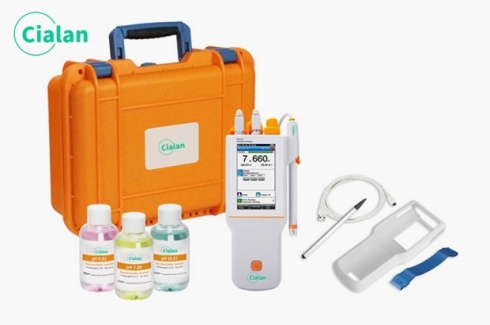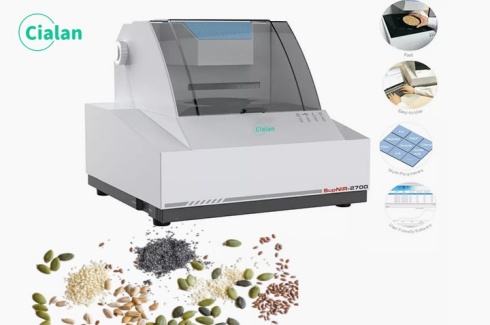Application of laser particle size analyzer in new energy field.
Overview.
Laser particle size analyzer instrument uses the principle of laser scattering to measure the particle size distribution of particles. In the field of new energy, it plays an important role.
In the research and development and production of new energy materials, the particle size distribution of particles has a vital impact on the performance of materials. For example, in lithium-ion batteries, the particle size distribution of positive and negative electrode materials will affect the battery's charge and discharge performance, cycle life, etc. The particle size distribution of materials can be accurately measured by laser particle size analyzer, providing a basis for optimizing the performance of materials.

Application in lithium-ion batteries.
(I) Positive electrode materials
The positive electrode materials of lithium-ion batteries usually include lithium cobalt oxide, lithium manganese oxide, lithium iron phosphate, etc. The particle size distribution of these materials will affect the performance of the battery. For example, a smaller particle size can increase the specific surface area of the material and increase the contact area between the electrode and the electrolyte, thereby improving the battery's charge and discharge performance. However, too small a particle size may also cause material agglomeration and reduce the battery's cycle life.
Laser particle size analyzer can accurately measure the particle size distribution of positive electrode materials, providing a basis for optimizing the performance of positive electrode materials. By adjusting the preparation process, the particle size distribution of the positive electrode material can be controlled to improve the performance of the battery.
(II) Negative electrode materials
Negative electrode materials usually include graphite, silicon, etc. The particle size distribution of graphite affects the capacity and cycle life of the battery. Smaller graphite particles can increase the capacity of the battery, but may also increase the internal resistance of the battery and reduce the performance of the battery. As a high-capacity negative electrode material, the particle size distribution of silicon also has an important impact on the performance of the battery.
The instrument can help researchers understand the particle size distribution of negative electrode materials and provide a basis for optimizing the performance of negative electrode materials. By controlling the particle size distribution of negative electrode materials, the performance of the battery can be improved.

Application in solar cells.
(I) Silicon materials
In solar cells, silicon materials are one of the most commonly used materials. The particle size distribution of silicon materials affects the conversion efficiency of solar cells. Smaller silicon particles can improve the conversion efficiency of solar cells, but may also increase the cost of materials.
It can accurately measure the particle size distribution of silicon materials and provide a basis for optimizing the performance of solar cells. By controlling the particle size distribution of silicon materials, the conversion efficiency of solar cells can be improved.
(II) Other materials
In addition to silicon materials, other materials are also used in solar cells, such as dyes in dye-sensitized solar cells and quantum dots in quantum dot solar cells. The particle size distribution of these materials will also affect the performance of solar cells.
It can help researchers understand the particle size distribution of these materials and provide a basis for optimizing the performance of solar cells.
Development trend.
With the continuous development of new energy technology, the requirements are getting higher and higher. In the future, the development trend of laser particle size analysers in the field of new energy mainly includes the following aspects:
(I) Higher accuracy and resolution
With the continuous development of new energy materials, the requirements for the measurement of particle size distribution are getting higher and higher. In the future, laser particle size analyzers need to have higher accuracy and resolution to meet the needs of the new energy field.
(II) Faster measurement speed
In the research and development and production process of new energy materials, it is necessary to quickly measure the particle size distribution of particles. In the future, laser particle size analyzers need to have faster measurement speeds to improve production efficiency.
(III) Online measurement
In the production process of new energy materials, it is necessary to monitor the particle size distribution of particles in real time. In the future, laser particle size analyzers need to have the function of online measurement to realize the automatic control of the production process.
(IV) Multifunctionality
In addition to measuring the particle size distribution of particles, laser particle size analyzers can also have other functions, such as measuring the shape and surface charge of particles. In the future, laser particle size analyzers need to have multifunctional characteristics to meet the needs of the new energy field.

Summary.
In short, powder laser particle size analyzers have broad application prospects in the field of new energy. With the continuous development of new energy technology, the requirements for laser particle size analyzers are getting higher and higher. In the future,it need to continuously improve their performance to meet the needs of the new energy field.
Laser particle size analyzer instrument uses the principle of laser scattering to measure the particle size distribution of particles. In the field of new energy, it plays an important role.
In the research and development and production of new energy materials, the particle size distribution of particles has a vital impact on the performance of materials. For example, in lithium-ion batteries, the particle size distribution of positive and negative electrode materials will affect the battery's charge and discharge performance, cycle life, etc. The particle size distribution of materials can be accurately measured by laser particle size analyzer, providing a basis for optimizing the performance of materials.

Application in lithium-ion batteries.
(I) Positive electrode materials
The positive electrode materials of lithium-ion batteries usually include lithium cobalt oxide, lithium manganese oxide, lithium iron phosphate, etc. The particle size distribution of these materials will affect the performance of the battery. For example, a smaller particle size can increase the specific surface area of the material and increase the contact area between the electrode and the electrolyte, thereby improving the battery's charge and discharge performance. However, too small a particle size may also cause material agglomeration and reduce the battery's cycle life.
Laser particle size analyzer can accurately measure the particle size distribution of positive electrode materials, providing a basis for optimizing the performance of positive electrode materials. By adjusting the preparation process, the particle size distribution of the positive electrode material can be controlled to improve the performance of the battery.
(II) Negative electrode materials
Negative electrode materials usually include graphite, silicon, etc. The particle size distribution of graphite affects the capacity and cycle life of the battery. Smaller graphite particles can increase the capacity of the battery, but may also increase the internal resistance of the battery and reduce the performance of the battery. As a high-capacity negative electrode material, the particle size distribution of silicon also has an important impact on the performance of the battery.
The instrument can help researchers understand the particle size distribution of negative electrode materials and provide a basis for optimizing the performance of negative electrode materials. By controlling the particle size distribution of negative electrode materials, the performance of the battery can be improved.

Application in solar cells.
(I) Silicon materials
In solar cells, silicon materials are one of the most commonly used materials. The particle size distribution of silicon materials affects the conversion efficiency of solar cells. Smaller silicon particles can improve the conversion efficiency of solar cells, but may also increase the cost of materials.
It can accurately measure the particle size distribution of silicon materials and provide a basis for optimizing the performance of solar cells. By controlling the particle size distribution of silicon materials, the conversion efficiency of solar cells can be improved.
(II) Other materials
In addition to silicon materials, other materials are also used in solar cells, such as dyes in dye-sensitized solar cells and quantum dots in quantum dot solar cells. The particle size distribution of these materials will also affect the performance of solar cells.
It can help researchers understand the particle size distribution of these materials and provide a basis for optimizing the performance of solar cells.
Development trend.
With the continuous development of new energy technology, the requirements are getting higher and higher. In the future, the development trend of laser particle size analysers in the field of new energy mainly includes the following aspects:
(I) Higher accuracy and resolution
With the continuous development of new energy materials, the requirements for the measurement of particle size distribution are getting higher and higher. In the future, laser particle size analyzers need to have higher accuracy and resolution to meet the needs of the new energy field.
(II) Faster measurement speed
In the research and development and production process of new energy materials, it is necessary to quickly measure the particle size distribution of particles. In the future, laser particle size analyzers need to have faster measurement speeds to improve production efficiency.
(III) Online measurement
In the production process of new energy materials, it is necessary to monitor the particle size distribution of particles in real time. In the future, laser particle size analyzers need to have the function of online measurement to realize the automatic control of the production process.
(IV) Multifunctionality
In addition to measuring the particle size distribution of particles, laser particle size analyzers can also have other functions, such as measuring the shape and surface charge of particles. In the future, laser particle size analyzers need to have multifunctional characteristics to meet the needs of the new energy field.

Summary.
In short, powder laser particle size analyzers have broad application prospects in the field of new energy. With the continuous development of new energy technology, the requirements for laser particle size analyzers are getting higher and higher. In the future,it need to continuously improve their performance to meet the needs of the new energy field.







